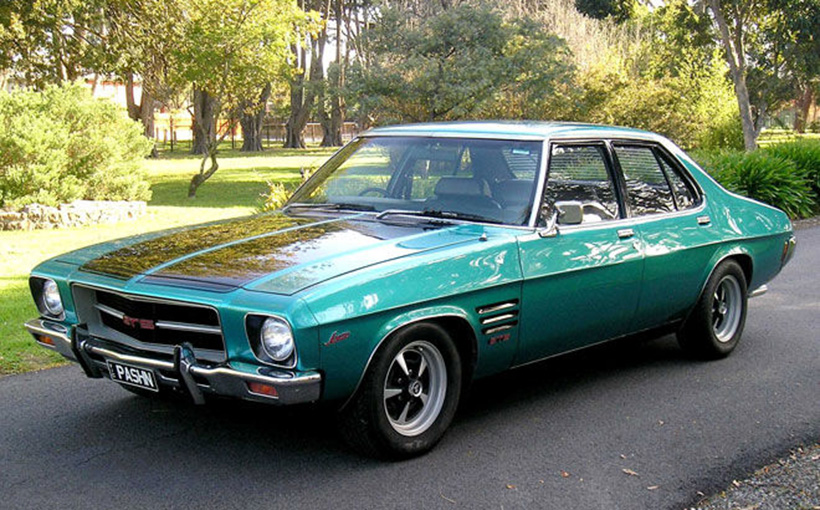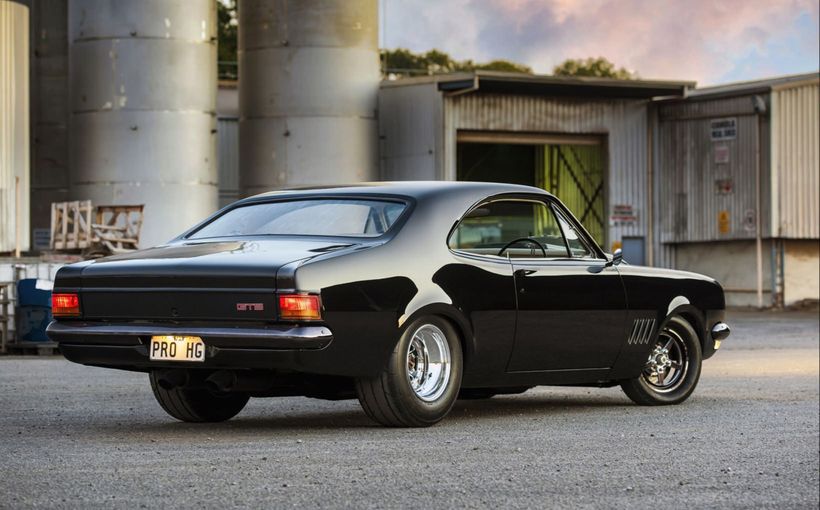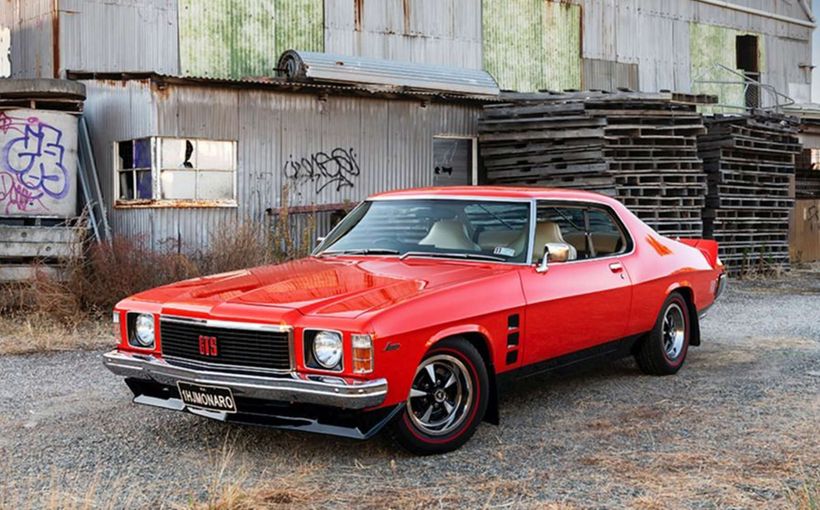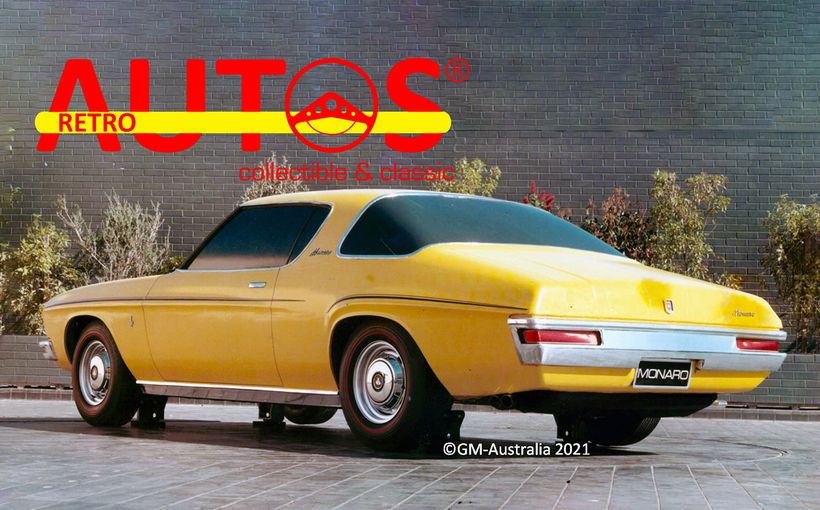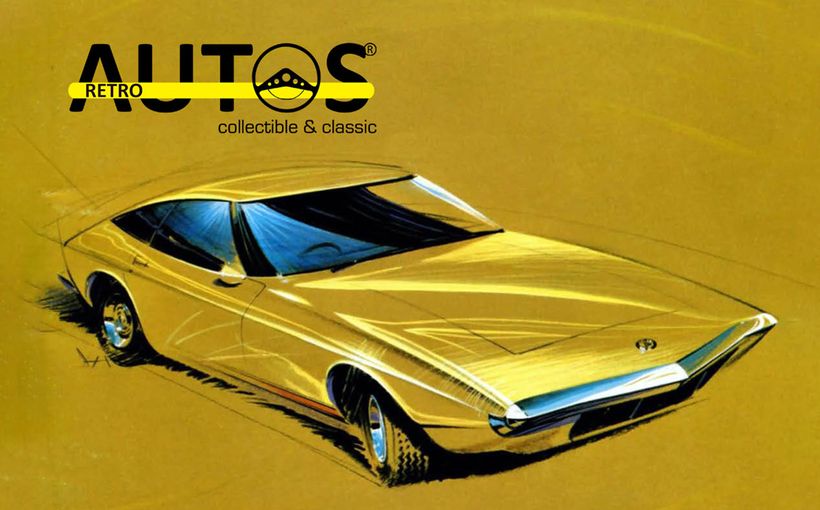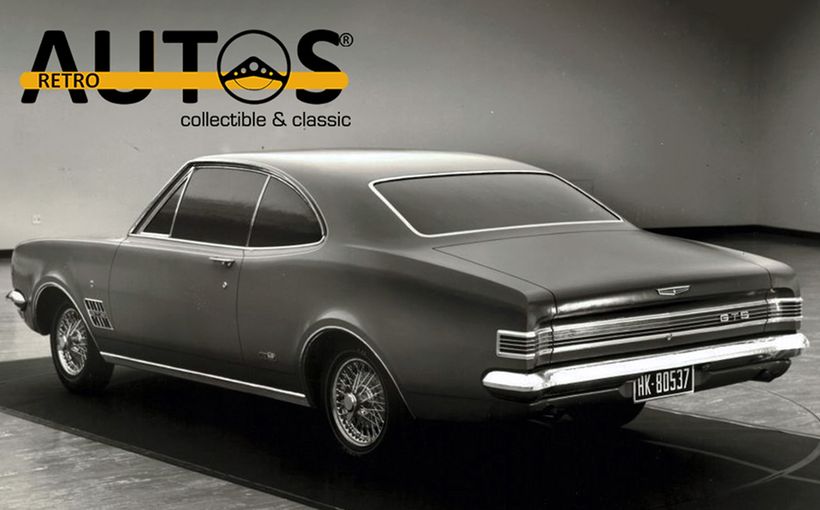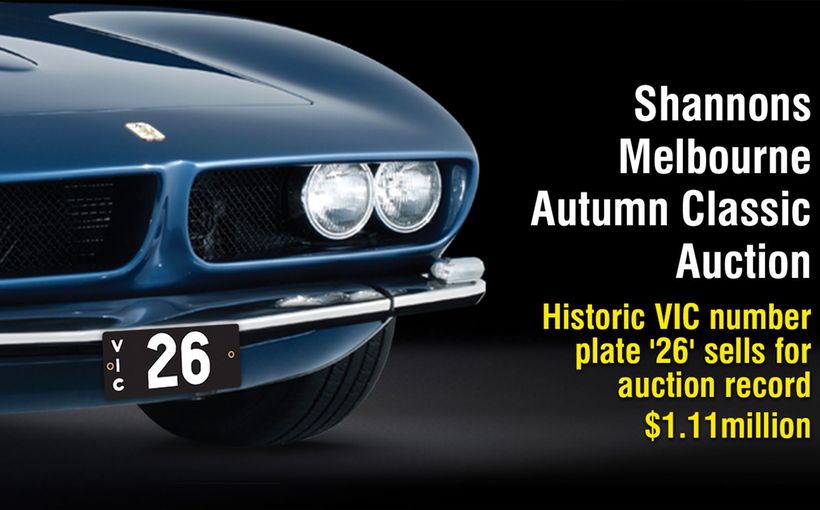1973-74 Holden HQ Monaro GTS 350: Benchmark Holden Versus the GM Civil Service

The Holden HQ was the first Holden that wasn’t a direct evolution of the original 1948 model. Its dramatic new styling presented something new every time you saw it for months later. Its unprecedented body and structural strength with all-coil suspension not only smoothed-out the roughest Aussie roads but extended longevity. The Monaro GTS 350 four door that arrived almost two years later in March 1973 should have been the most desirable version of all. The reasons why it could never match its Falcon GT rival in the desirability stakes and still doesn’t, can also explain the beginning of the end of Holden as Australians knew it.
The HQ reflected unmatched engineering expertise and experience in dealing with outback Australian roads under the legendary Australian body engineer Reg Hall, known for telling the Americans a thing or two when they got it wrong. Holden’s new sixes that arrived in 1963 with the EH had been steadily improved and Holden’s locally-developed V8 was knocking on the door of the de-toxed imported Chevrolet V8 without the weight and fuel consumption.

There was a wide choice of manual and automatic transmissions that applied equally to six cylinder and V8 engines, unmatched by rivals in 1971. And the flow-through ventilation was a first for an Aussie design.
The HQ came so close to being the pinnacle of large family car design, globally. All the ingredients to make it the best of its type in the world were already inside Holden. Yet that could never happen.
Under the civil service structure of the GM corporation which extended its tentacles into Holden, standing on ceremony ranked above ability. Vital areas such as braking, handling, suspension tune, tyre choice and product positioning were in the hands of Holden executives still stuck in the 1950s. The lack of competition and heavy protection encouraged a paternalistic “father knows best” relationship with Australian buyers.

Because of the vertical pillar corporate structure that didn’t have to pay too much attention to an overall plan or consider other areas, the GM civil servants from the US and Australia at the top of these pillars could basically do what they liked to a new model and no one could stop them.
The HQ GTS 350 four door sedan was Holden’s first and last opportunity to produce a Falcon GT rival with sporty four door styling powered by an engine of comparable size. Even though the new GTS four door arrived in the second half of the HQ model life with the benefit of two years of hindsight, fundamental flaws in Holden management structure ensured it could never represent an advance in areas where the opposition was starting to crush Holden.
Yet in the areas headed-up by Holden management who knew what they were up against, the HQ and the GTS 350 were outstanding.

The Design
The HQ was the first all-Australian Holden design since the FB-EK Holdens and marked the end of a long process of Holden winning back its self-determination.
It was this aspect more than any other that made the HQ an unprecedented sales success even if it generated expectations in the Monaro GTS 350 that couldn’t be met.
Because the FJ was to be the last Holden with American input, Holden styling was already in the hands of 43 year old draftsman Alf Payze by 1952, the year work on the FE started.
Based in a shed on the outskirts of the Fishermens Bend site, Payze could do little more than develop his new shapes on a wall in the best drafting tradition. His work was unbelievably good considering his resources until his dated FB and EK hit turbulence from a rush of new rivals.
As soon as the Americans realised Holden was staring at disaster with his EJ, they stepped in and fixed the EJ. They then delivered the EH facelift before Holden lost the HD design to the US. The HD was the first Holden to lose its encounter with GM’s civil service.
The HD’s failure, like the first Falcon, prompted the Americans to hand it all back to the Aussies with the resources to get it right. The outstanding advance that the HQ represented in design started with the original Aussie EJ and the US HD missing their targets.
Holden’s forward thinking management fought for an exact but smaller replica of the GM Technical Centre at Warren, Michigan built in 1950. Scheduled to be up and running over the 1963-64 period, it was called “Technical Centre” to qualify for government incentives to move all research and development to Australia. It would give Holden such a head start in catering for Australian needs, Ford Australia had no choice but to match it within a decade under similar incentives.

Backed by the Lang Lang Proving Ground, the Holden Technical Centre was one of the most comprehensive development packages of any car company in the world. Little wonder that this combination, since matched by Ford with the You Yangs Proving Ground, is still performing vital development work on GM’s global model range.
Because World War II had disrupted specialist offshore training in this area in Australia more so than in the US, there was an acute shortage of local staff to work in Holden’s Technical Centre. Acclaimed Pontiac and Cadillac designer, Joe Schemansky came from the same pre-war talent pool and age group as Alf Payze.
After playing a key role in cleaning-up the EJ and defining the EH, Schemansky had already proved receptive to Australian needs. He was the obvious choice to head up the new centre and later became so committed to Holden that he made Australia his permanent home.
Schemansky’s appointment explains why Holden design suddenly became more adventurous and sensitive to local needs than other Holden departments. The sleeker and stronger three dimensional look that defined the HQ was the result of a difficult process that had to address many different requirements on several fronts. Although Schemansky’s HR facelift was a sign of what was to come, Detroit had to step in again for the HK series.

Even if there was some local involvement with the HK, there was still no process for Schemansky to bring promising young Australian designers on stream to take the design from start to finish. Because of Schemansky’s standing with Bill Mitchell, GM’s maverick design chief, Detroit’s best young designers were sent to work alongside the Australians as part of a mentoring, learn-by-osmosis process.
As a result, the HQ was designed by some of the best and most forward-thinking local and US young guns from the world’s biggest automotive corporation, all in a hurry to make their mark.
This process was started by taking the staid, square-rigged HK and turning it into the Monaro, laying the foundations for an HQ sedan that was almost as sleek.
The Monaro was shaped by 26 year old John Schinella sent to Australia, fresh from designing the Chaparral and several wild Chevrolets. He represented an unbelievable resource for the fledgling Tech Centre. Assigned to him from 1965 was his 21 year old Australian understudy, Phil Zmood. According to Zmood, Schinella had the brash confidence of a young designer privy to GM’s coming technology and radical future design trends.
Zmood recalls that the critical factor was Schemansky’s insight and confidence in his own position to let his young team of designers loose. This was in stark contrast to some of Schemansky’s more guarded management colleagues who made a point of suppressing ideas and initiative of their young charges.
After Schinella established the profile of the first Monaro, he was given the job of translating that look into Holden sedans before defining an all new Holden look for the HQ. For someone in their 20s, it was a do or die opportunity of a lifetime.
The combination of Schemansky’s Pontiac background and his knowledge of the coming Le Mans and GTO ranges with Schinella’s awareness of the next Chevelle-based Malibu hardtop, allowed the key elements of the HQ to be defined.
These 1969-70 model ranges previewed the tapering bootline, the round head lights in square pods, the deep recessed grille separated from the headlights and the heavy side swage lines above each wheel arch, inspired by the 1950s Mercedes-Benz 300SL range.
The HQ rear bumper was a scaled-down replica of the 1969 Chevrolet Impala. Was it a coincidence that Holden picked the 1968 Chevrolet model year to end decades of Chevrolet assembly in Australia and stockpile the 1968 model until the HQ Statesman arrived?

Even variations of the divided upright Oldsmobile and Pontiac grilles were trialled for the HQ Monaro.
Zmood recalls there was always a selection of the latest US models at Fishermens Bend during this period including the Pontiac GTO, various Oldsmobile performance models, Chevrolet Corvair, Opel GT and Chevrolet Corvette. Holden designers were encouraged to integrate the latest GM trends.
There were two crucial interim steps that prevented the HQ from being a me-too version of late 1960s US cars. The first one was removing GM’s Coke-bottle hip line from the HK, some seven years ahead of the XC Falcon. This seemed a bizarre move as it had only appeared on the one Holden series before it was gone.
The 1969 HT-facelift sedan’s rear door window depth grew 51mm. It was a sneaky and unexpected move as rivals were still racing to catch-up with GM’s 1965 advance.
This helped establish the larger glasshouse and the straight side window line that would soon position the HQ as a fresh new 1970s model ahead of the late 1960s flavor of the XA Falcon and VH Valiant. The HT facelift was the direct result of the local Technical Centre tuning into a local switch towards Europe while preparing the market for the HQ.

The HT/HG sedans (except Premier) also gained a Monaro-style roofline that flowed into the boot and rear quarters without a clear join. Integrating the C-pillars into the rear quarters was a major advance for 1969 and an important evolutionary step for a four door Monaro. With their upright farm gate fronts, the HT/HG sedans were still not sporty enough for a GTS sedan.
It was around this time that the proposed divided vertical grilles for the HQ Monaro and other HQ standard wheelbase models were abandoned. The only variation that did survive appeared on the HQ Statesman and the old guard inside Holden made sure it was scrapped as soon as possible.

Phil Zmood recalls that the later 1967-69 Mustang front had since made quite an impression especially in Australia where this style was dominating the race tracks. This Mustang was the first to feature an open-mouthed grille that plunged below the headlight line for extra aggression with a forward-sloping side-profile to match. It had an impact on GM’s sportier US models and its application on the Buick Gran Sport made it more palatable for Holden management of all ages.
Zmood recalls that by incorporating this look into the HQ, Holden knew Ford couldn’t match it until the Falcon’s old 1966 sheet metal was replaced in 1972. As it turned out, Ford made an almost fatal mistake by presenting an even softer 1960s front on the 1972 XA Falcon and had to rush the XB facelift into production.
Even if the HQ’s variation of this Mustang front was a more conservative blend of the Buick Gran Sport grille opening with the Mustang’s forward-sloping side profile, the HQ was still ahead of its rivals. The similar front of the LJ Torana XU-1 appeared at exactly the right moment on race tracks when Australians were still coming to terms with this brand new look.

A variation of the HT/HG’s straight and deeper side window line applied to the HQ in combination with the swoopier and scalloped lower body sides and slender tails of various US models were all defined by Holden’s new Technical Centre.
But it didn’t end there. Leo Pruneau was brought out from Opel to finalise the frontal details and gave the HQ the simplicity of coming Opel fronts without the German heaviness down the sides.
Zmood applied the fine windscreen pillars at the last minute. Not due to appear across the GM US range until 1971, this made the HQ front look even fresher. They became a powerful advertising tool with their added vision. The later loss of these front pillars is much lamented by several generations of Australian drivers who grew to appreciate how effective they were.
These windscreen pillars, along with the slender C-pillars on HQ sedans, added a lithe, sporty look different from almost everything else on offer in Australia. Because the sedan’s slimmer C-pillars made it look even sleeker than the HQ Monaro from some angles, it is not surprising that Monaro coupe sales would soon be a casualty.
Although stunned Australians were initially unsure of the HQ sedan because it no longer looked like a big, boofy Holden, it was soon embraced. The airy, open look of the HQ previewed several of GM’s US 1973 models, a welcome change from the days when Holden was behind. Not surprisingly, Holden had to take another look at the HQ model range after it moved the goal posts.

Market Positioning
Although HQ designers knew their job, others within Holden didn’t see the opportunities the new shape provided, hence the panic-driven return to square Holden fronts for the HJ facelift. By the time Holden management had caught up in their thinking, it was too late to drop the HJ.
Before that happened, there could never be an agreed understanding of the hero role of the Monaro for HQ beyond the coupe. This explains the almost complete disconnect between HQ Monaro concept cars and those offered in the showroom.
It is significant that Holden first presented a four door HQ SS sports sedan at Valiant Pacer level. Based on the cheapest Belmont with the entry level 253/4.2-litre V8, the SS upgrades were entirely cosmetic.
Yet the HQ SS styling package was actually developed on an early 1972 four headlight HQ Premier sedan. It was meant to be a premium four door GT alternative separate to the Monaro GTS range in much the same way as the LX Torana SS 5.0-litre hatchback was separated from the SL/R 5000 sedan.

A “Bagshaw special” built for marketing suit John Bagshaw, the HQ Premier-based SS concept car was proof that “Bags” was facing battles of his own. It featured the four headlights, rear spoiler, polycast wheels, leather trim and other tweaks that an HQ-based Falcon GT rival needed. It followed an earlier coupe concept that featured bonnet pins and front spoiler.
Bagshaw’s Belmont-based SS production model was clearly a low risk strategy of demonstrating a point even if it made no sense to the press until its low price was announced.
Although the HQ SS as a Pacer alternative was successful, it was at odds with the entry levels of the Monaro GTS coupe and still left the four door GT segment uncovered. By 1973, Holden was well aware that given the choice between an XA Falcon GT sedan or Hardtop, most Falcon GT buyers were opting for the sedan.

The old guard was forced to let go of their entrenched thinking and sanction a Monaro GTS four door. They could hardly do anything else. After the SS was announced as a limited edition of 600, it sold 1600 of the first batch then required another batch of 1000 at the end of 1972.
Against just 1356 GTS V8 coupes and 180 base Monaro V8 coupes sold in 1972, Bagshaw’s SS made members of the GM civil service look silly. Yet they were not ready to cave in totally.
By all objective measures, the HQ Monaro GTS should have been based on the Premier sharing that model’s four headlight front or single headlights with extra driving lights. Leo Pruneau always argued that the GTS needed to be Holden’s hero model based on the Premier, just like the Falcon GT 351 was a Fairmont with extra muscle and track cues.

Even after Ford cleverly separated GT from GS, Holden offered an HQ GTS at three different levels. If the HQ GTS was not going to be restricted to a premium 350/5.7-litre model to match the standalone GT 351 based on a Fairmont, the thinking was that the GTS 350 version at least needed extra features such as front and rear spoilers, extra vents and extra war paint. Transferring these hero features to the GTS 308 would have ensured a seamless transition as soon as the 350 was phased-out.

This is how key Holden design and marketing staff wanted the new HQ Monaro GTS 4 Door to appear so it was seen as a step above the single headlight Belmont-based SS limited edition. At the time, dealers were quite happy to raid the parts bin to give buyers what they wanted even if Holden didn’t. Soaring HQ sales meant that old school management never had to confront the shift from prestige to luxury-sports as the new local hero models until they were forced to change with the quad-headlight HX LE in a desperate bid to clear unsold coupe bodies. (Photo from Des Huxtable)
There were those already in Holden who clearly understood this as there would soon be clear differences between an LH Torana SL/R 3.3/4.2 and the full house SL/R 5000. Even during the HQ model life, there was the same differentiation between GTR and GTR XU-1 proving that this distinction was already understood by Holden design staff and John Bagshaw.
The only concession made for the HQ Monaro GTS four door was to base it on the Kingswood, not Belmont. The main upgrade in appearance over the earlier HQ Monaro GTS coupes was a freshen-up of the stripes and paint accents that applied equally to GTS coupe and sedan. Inside, Holden’s vastly improved moulded foam seats and new trim made a difference but they were an earlier running change that applied to the HQ range, not just Monaro.

The sleek rear of this HQ Monaro GTS 4 Door highlights why buyers soon preferred this version over the coupe as it looked almost as good while catering for the Aussie preference for four doors. Leo Pruneau always believed that the HQ rear needed a rear spoiler to toughen up its rear profile on the sporty models. The rear spoiler he designed for the HQ rear on later Monaro coupes would have looked sensational on this car combined with the quad-headlight front. (Photo from Des Huxtable)
As a result, Holden’s first foray into four door Falcon GT territory, arrived looking like an SS Series II. As an SS Series II, it was very good but a long way short of what Holden had led Australians to believe what was coming, as per the cover of Motor Manual, July 1972.
The GM civil service grimly hung onto the notion that the HQ Premier had to retain its positioning as the sole premium HQ model with four headlights which in turn left the confused Monaro LS Coupe as the sole four headlight Monaro model. The HQ Monaro GTS 350 was robbed of four headlights and premium positioning to protect the incremental 4212 sales of the Monaro LS V8 over the entire 1971-74 HQ model life.
Design and marketing would not win this battle until Holden was brought to its knees while still trying to clear the HQ’s leftover coupe bodies five years later. The HX LE’s quad headlights, front and rear spoilers and polycast wheels ensured immediate acceptance for a model that wouldn’t have sold otherwise. It came too late to make a difference to the HQ GTS 350 but not for the HZ GTS. By then, the world had moved on.

Chassis Development
The other key area where the GTS 350 failed to exploit its superior HQ starting point and challenge the Falcon GT was in suspension tuning and handling.
For Australian enthusiasts, what happened to HQ handling and braking at GTS 350 level was frustrating. At lower levels, it bordered on dangerous after a large and relatively heavy full-sized new HQ Holden was unleashed onto an unsuspecting public on skinny cross-ply tyres, drum brakes all round and suspension that couldn’t cope with the weight transfer if front discs were optioned.
In a bid to hide this, former Holden public relations staff now concede that HQ test cars were supplied optioned-up with firmer suspension and front disc brakes so that journalists couldn’t experience the car that most Australians bought. It remains a shameful chapter of Holden history (and by no means the last) that this could continue for another five years before visiting Americans pulled the pin after they almost came to grief driving an LH Torana.
The HQ, with its separate front semi-perimeter frame and fully-located coil spring rear suspension attached to a body engineered by Australian Reg Hall to unprecedented standards, remains an undisputed high-point in Australian automotive history. That an entire Holden range could then be deliberately engineered not to steer as well as it could so it would scare the driver into slowing down beggars belief.
The shift to this Holden handling approach started with the 1967 despatch of wide-track Pontiac engineer George Roberts to help with Holden chassis development. By 1971, as chief engineer, he was non-negotiable on his use of extra ride compliance and strong understeer to force drivers to slow down. Because the HQ was the first Holden to be developed from scratch under this approach, it was the most extreme example up to that point.

Folklore, largely generated by Harry Firth who tweaked his own HQ GTS 350, suggests that it only took a few tweaks to reverse this. The RTS program, as applied to the HZ, suggests it was far more extensive than this. The lower cornering forces allowed Holden to save millions in suspension bushes and component strength including rims and tyres.
Later rationalisations that he was in fact saving Australian lives don’t stand scrutiny. More sophisticated road accident statistics would later reveal that the single most cost-effective option for saving more Australian lives was to remove cars, the majority of which were Holdens, of this era from the roads. Fatal single vehicle crashes in Holdens that “failed to negotiate a bend” were all too common.
Senior engineers who were there at the time note that the Holden vertical pillar management approach could work really well if there were cordial and respectful relationships between the different managers (as HQ design and body engineering demonstrated). It failed completely if a manager was a loner and didn’t care. As another 1970s staffer observed: “There wasn’t enough expertise at senior levels to arbitrate or provide direction once this process failed.”
In the absence of such fail-safe management procedures, HQ development was marked by nasty and unprofessional dust-ups in the staff canteen witnessed by younger staff. While one group was trying to give the HQ a tighter, more responsive feel over the HG it replaced, another was dialling in extra compliance or “slop” as it became known internally.

The result was a beautiful and tight new HQ body that felt disconnected from its wheels. This was at least partly desirable on rough roads and cruising around pot-holed suburban streets at low speeds. At the slightest hint of a corner especially at highway speeds, the HQ too often conveyed the impression that the body was not going to follow the wheels.
The HQ GTS 350 four door could only delay this impression with its firmer settings and extra grip of its ER70H14 radial tyres (usually Goodyear Rally). It must be said that prior to the arrival of the GTS four door, all HQ Monaros including the GTS 350 came with standard cross-plies. It was significant that the only claim the brochure could make about GTS suspension was its “jet-smooth” ride.
It was as if someone in Holden knew what it was peddling. Unusually, there were no claims of improved handling or a sports driving experience. It was left to Peter Brock to claim: “It makes you enjoy motoring all over again.” Note the careful absence of the word “driving”.
By 1973, Ford was confidently describing the Falcon GT as “Australia’s most precise and smoothly disciplined cruising machine.” Because there was no shortage of magazine comparisons to support this, Holden could not make counter claims.

GTS 350 brakes were also marginal. Although the front discs specified for upper HQ Monaro levels were ventilated, they were still too small at 10.88 inches diameter. Not only were they smaller than the Falcon’s 11.25 inch discs, Ford had already started fitting four wheel disc brakes to its premium models, a process that reached the Falcon GT within months of the HQ GTS 350 four door’s arrival.
Upgrading HQ brakes without an RTS overhaul was pointless anyway as the weight transfer was so severe under the braking power of front disc brakes that extra rear braking performance would have been wasted.
Senior journalists including Peter Robinson from Wheels and Peter Wherrett were relentless in pursuing Holden on these issues. The 1972 Supercar beat-up over a couple of hundred homologation models starts to look more like a smokescreen against the hundreds of thousands of underspecified family cars hitting the roads during this period.
As 350/5.7-litre performance was being compromised under US emissions rules and the GTS 308 was in no position to restore it, this was not the time for Holden to wind back on driving pleasure, handling and braking.
Over the entire HQ model life, just 402 HQ GTS 350 Coupes found a home whereas the best estimates suggest that the four door could only double this in what remained of the HQ model life. This at least validated the introduction of a four door version. A grand total of just over 1200 was still a disappointment given how beautifully-styled both HQ GTS 350 body styles were and how tantalizingly close to outstanding the rest was.

The Final HQ GTS 350
According to Holden expert, Ben Stewart, the HQ’s 350 was an export engine built for the Australian market by McKinnon Industries in Canada (GM's export arm) similar to the automatic HT/HG GTS 350 V8 but now shared with the manual. The softer emissions 350 engine introduced in late 1973 had a different carburettor along with extra pollution gear and other changes. The fine splined heavy duty Muncie 4-speed manual gearbox was fitted with a special RHD Hurst-branded shifter manufactured under licence in Melbourne angled towards the driver. It was offered as an alternative to the Turbo-Hydramatic 400 auto. The standard ratio of the10-bolt Salisbury limited slip differential for both auto and manual was 3.08:1. Performance ratios included 3.55:1 and 3.36:1 for the manual. A tall 2.78:1 was available for the auto.
Mar 1973: The upgrade of all Monaro GTS models sometimes called Series II occurred with the introduction of four door GTS. The bright side panel sill strip was deleted, earlier blackouts were extended to panels between wheel arches and front and rear bumpers and the side gills gained black accents. Delete option rally panels were added front and rear. ADR changes dictated amber indicators so parking lights were moved inside headlights. New long grain vinyl covered seats and doors while previous dot pattern continued on steering wheel, centre console, dash and armrests. Bright seat hinges were replaced by black seat hinges with vernier recline adjustment. A new black and white herringbone Ranier cloth insert option replaced the earlier houndstooth pattern. The 350 decals of earlier GTS 350 coupes were deleted as a new Monaro script badge took their place.
Mid-1973: Dual mph/km/h speedo reading with km/h main reading, supplementary mph, metric odometer.
Aug 1973: Last manual GTS 350 produced.
Oct 1973: Auto GTS 350 continued with low compression unleaded emissions engine with only 10bhp/7.5kW more than Australian 308/5-litre.
1974: Full metric speedo. GTS 350 withdrawn with October 1974 HJ release.
As for performance, the manual GTS 308 was quicker than an automatic GTS 350 over most acceleration brackets. Both posted a standing quarter mile in the low 16 second region. The first manual GTS 350 coupes stopped the quarter mile clock in under 15 seconds although the later four door GTS 350 manual took 15.8 seconds. The most telling difference between the final emissions-spec HQ GTS 350 auto and GTS 308 auto during the 1974 fuel crisis period was an extra 30 per cent fuel consumption over the 308 to gain just a few tenths in most acceleration figures. It was on this note that the GTS 350 quietly slipped out of the model range without a hint of ceremony.
Protect your Monaro. Call Shannons Insurance on 13 46 46 to get a quote today.

